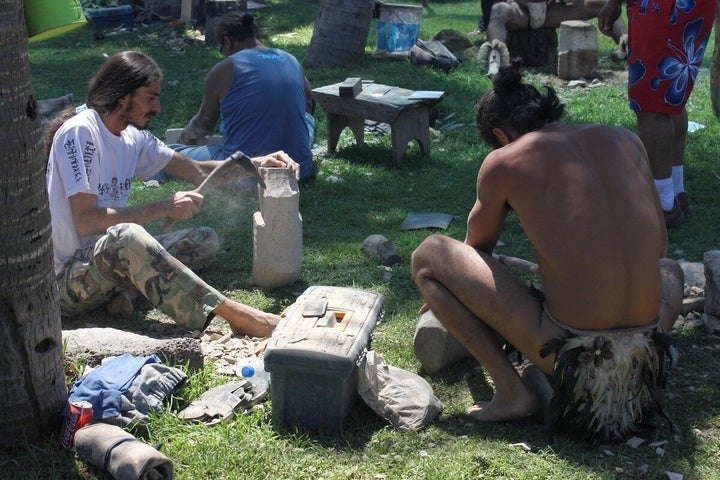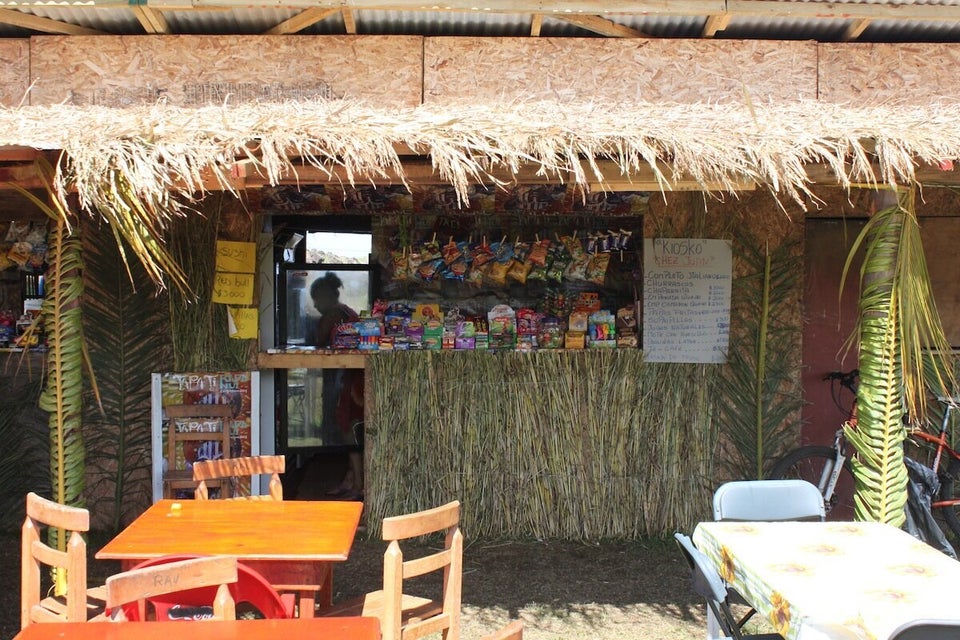
About 15 minutes into the statue carving competition in Hanga Roa, the only town on Easter Island, it became clear which of the craftsmen was going to finish first. He'd already hewn the general, recognizable shape of the island's trademark moai, or ceremonial statues, out of his block of stone. Next to him, a man wearing little more than a rope for a loin cloth was still struggling to chip away the outer layer of his brick. The clock was ticking and the competition was becoming less of one by the minute.
As others hacked away at their own carvings under the shade of a canopy stretched between the palm trees, a crowd grew. This was not an art workshop but a part of the island's annual Tapati Festival, a celebration of the local culture.
Of course, the famous monolithic statues here weren't handily carved on in one sunny afternoon. They were hewn from the volcanic slopes of Rano Raraku, one of three extinct volcanoes that form this small island more than 2,000 miles from the coast of Chile. How they were carved and how they were moved remain still partially unanswered questions that motivate many to visit this remote destination in search of answers.
But Tapati, with its focus on the living rather than the long-lost culture of this place, aims to give tourists another reason to come besides ancient history. As the crowd at Monday's moai carving could attest, the appeal of Polynesian handicraft is nearly universal, with American, British, Japanese and South American visitors enjoying the scene -- alongside locals who were cheering on their neighbors and, in some cases, marveling at the carving abilities of their fellow Rapanui.
It was, at a certain point, less of a competition than a collaboration, a celebration of the craft over a victor. A younger man making quick work of his stone slowed his progress to assist a fellow carver with his technique. One older competitor, bedecked in a ceremonial headdress and few other vestments, hacked away at his block until pausing to consider his radio, sitting nearby, before covering it with a hat to shield it from flying chips of stone. The obvious speedster who would've run away with first prize if time were the only factor, handed some nearby children a small piece of stone so they could try to chip out their own, smaller moai.
Spectators stood rapt, as the scent of wood smoke firing grills nearby filled the air. Many were not exactly sure what they were watching for even though the chipping was enchanting in its rhythm. Is there a particularly good stroke that should be applauded? Are traditional shapes more prized than contemporary interpretations of the moai form? How to judge the smoothness of a finish you can't touch? Are there bonus points awarded for carving in traditional garb? Answers were few, but cameras capturing the action were plentiful, whether the humble lens of a cell phone or the telephoto on the five-figure rig of a curious Japanese tourist pointed unapologetically in the face of a man wielding a razor-sharp instrument capable of sheering volcanic stone.
As the carving continued, it became clear that who "won" wasn't important. That this event would happen at all is critical to the Rapanui, who are widely seen as having a culture whose greatest contribution to the world at large is a dire warning of the consequences that befall a people who overexploit their resources. Never mind that recent research suggests that isn't what happened here at all. The carving, the competition, the fraternity it engenders and the photos and memories it creates mean to remind everyone that the islanders are still here, and they're still creating beautiful art.
